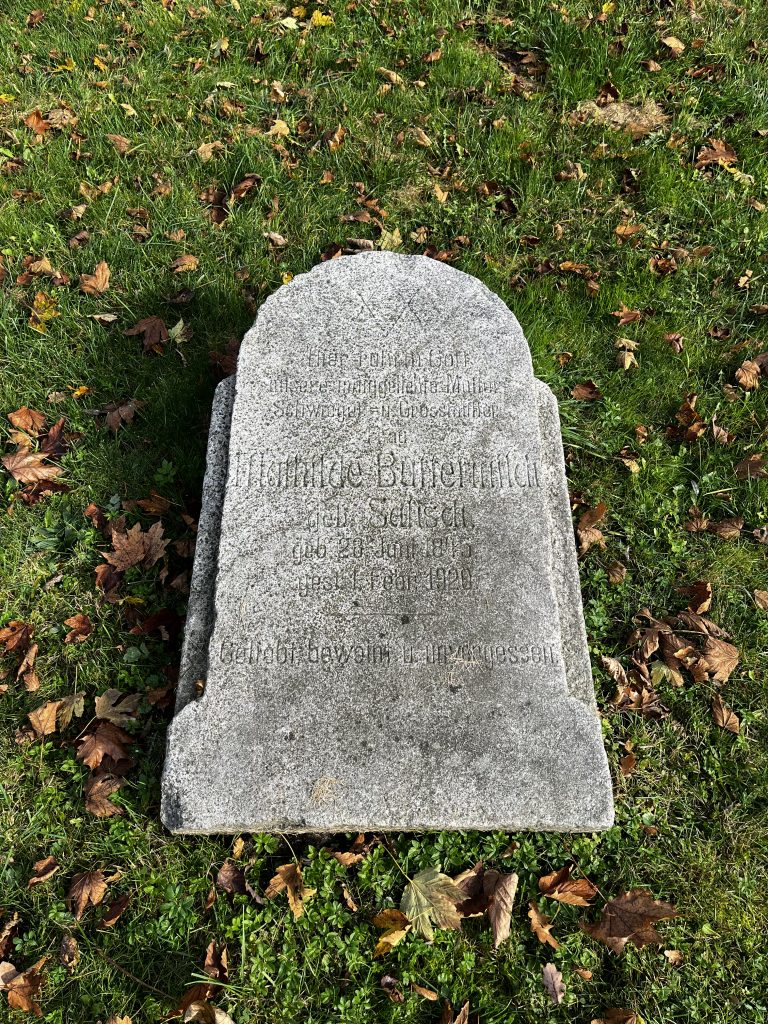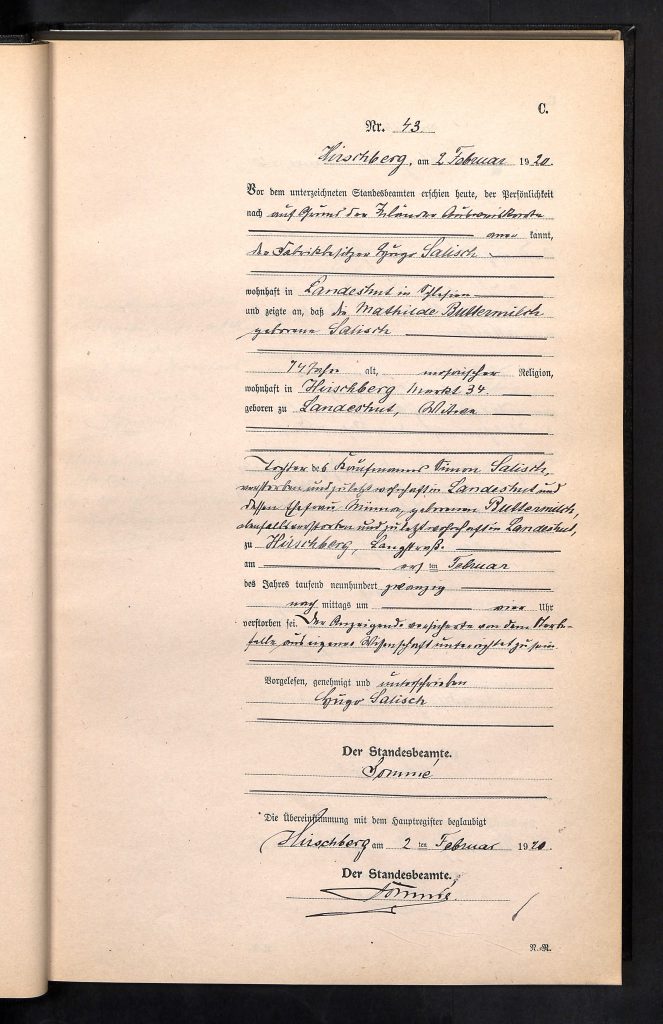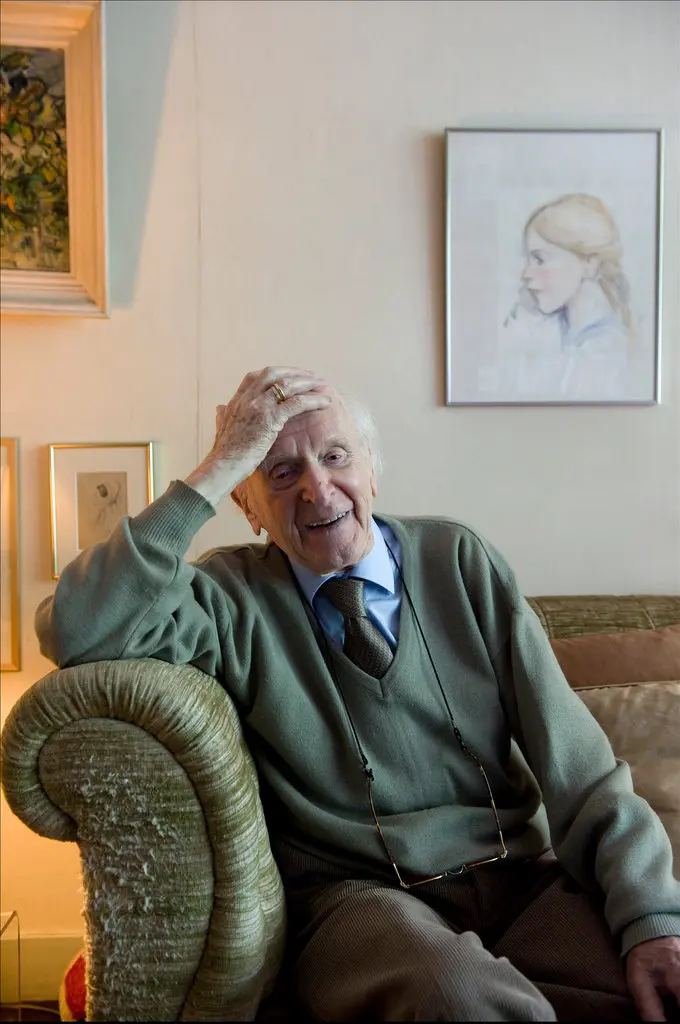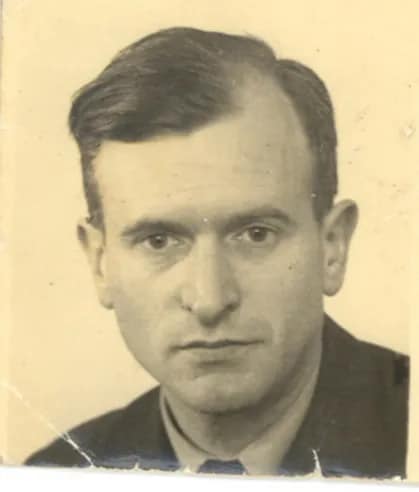Today’s protagonist is Mathilde Buttermilch – another of the seven individuals whose tombstones have been preserved in the Jewish cemetery in Jelenia Góra (Hirschberg), and whose life stories I want to bring closer. And this tale will be not only about Mathilde but also about her grandson, who gained fame at the age of 100. So, if you ever think you’re too old for something, remind yourself of Hans’s story. But first, let’s return to his grandmother.

Tombstone of Mathilde Buttermilch in the Jewish cemetery in Jelenia Góra / Photo by Marta Maćkowiak

Death certificate of Mathilde Buttermilch / Source: Landesarchiv Berlin
On September 12, 1876, she married Alexander Buttermilch, a trader from Lissa (Leszno), the son of the late Jakob Buttermilch from Landeshut (Kamienne Góry) and Colina née Gottstein, who lived in Leszno before her death. Considering that Mathilde’s mother’s maiden name was Buttermilch and she came from Lissa, there is a high probability that the spouses were related within a certain generation.
Alexander and Mathilde settled in an apartment in the tenement house at Plac Ratuszowy 34 (Markt 34), which would remain their home until their deaths. Alexander passed away first, on March 3, 1907.

Plac Ratuszowy 34 in Jelenia Góra / Source: Polska-org.pl

Marriage certificate of Max Keilson and Elsa Buttermilch / Source: Landesarchiv Berlin

Photo of Hans Keilson / Photo by Herman Wouters for The New York Times

young Hans Keilson
Sources:
Impressum:
Design: lukaszhajduk.com
Code: tomhajduk.com
Photo: @kasia_kaleta
Polityka prywatności
Regulamin sklepu
All rights reserved ® Marta Maćkowiak 2025